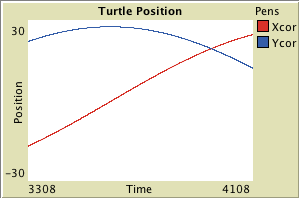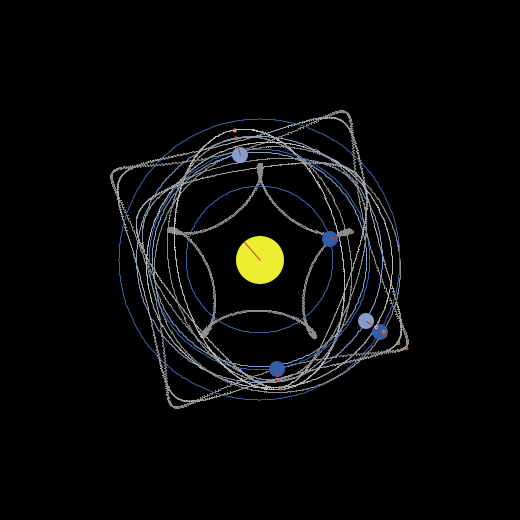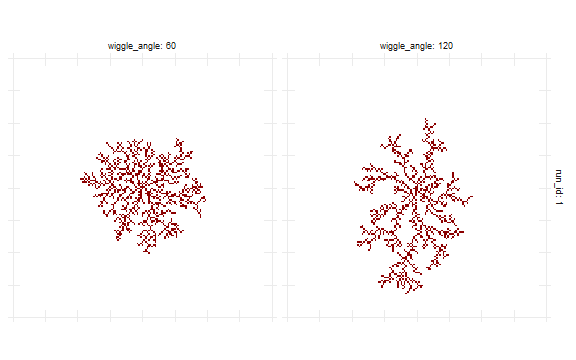

Leaves collect water from nearby raindrops. Similarly, all of the raindrops travel up the trunk of the tree, and then along the branches (which are not represented in the model), out to the leaves. In this model, the entire ground is assumed to contain tree roots, and thus all raindrops flow toward the trunk once they reach the ground. Water does not enter each leaf directly, but is absorbed by the tree's roots, from which it is pulled up the trunk and into the branches and leaves. (The higher the concentration of sugar, the more anthocyanins are produced.) Sugar concentration increases when cold weather causes the tree to shut down its water circulation to the rest of the tree whatever water and sugar are trapped in the leaf are then converted into anthocyanins.Įach tick of the clock in the model consists of two stages: (1) Weather (rain, wind, sun) affects the leaves, adding or removing sugar, water, or chlorophyll as appropriate, and (2) the leaf reacts to its environment, adding anthocyanins as appropriate, and changing color to reflect the modified environment. Anthocyanin molecules are created in the presence of high sugar concentrations and water concentrations in the leaf. Red comes from a substance called anthocyanins. As the chlorophyll dies, however, the presence of carotene becomes apparent, resulting in a yellow leaf. A leaf with lots more chlorophyll (typical in the summer) will be exclusively green, albeit with strong yellow tints masked behind the green. However, the yellow color is often masked by the chlorophyll's green color. The concentration of carotene remains constant throughout a leaf's life. Carotene molecules help give color to carrots and sweet potatoes. Yellow comes from a substance called carotene. Overall chlorophyll concentration rises again in the sunlight (as long as there is not too much!) and when there is water. Thus, cold sunny fall days make the overall concentration of chlorophyll decrease. Chlorophyll molecules are destroyed and not replenished when they are exposed to excessive sunlight and when temperatures are low. Green comes from chlorophyll (or a set of related substances known as chlorophylls), which converts sunlight and water into sugar. Three substances contribute to a leaf's color: The colors that we see in each leaf stem from the presence of natural substances that are produced and stored in each leaf. (Leaves can be blown off by strong winds even if they have not yet changed color, so wind has a role too.) Why and how leaves change colors and fall is surprisingly complicated, and has to do with a combination of sunlight, heat, and rain. This model simulates the ways in which leaves change their colors and fall, making it possible to explore and understand this beautiful annual spectacle. If you live in a climate that is warm during the summer and cold in the winter, then you are probably familiar with the beautiful autumn phenomenon in which leaves turn color before dying and falling off of the tree. We have provided you with a step by step tutorial to assist you in downloading a map and building it into your graphics window.Do you have questions or comments about this model?.If you want a program to read from a file, the file and the program must be in the same folder.Land-cover With Scale-color for Elevation HSB Image Using Slope, Elevation and Land Cover Confluence of the Gunnison and Colorado rivers You may find it satisfactory to use RGB or hue, intensity and brightness to combine attributes of land cover and elevation.It is not possible to scale color for both variables at the same time.Your imported data must also have a matching odd number of rows and columns as the window has.The graphics canvas in Netlogo is an odd numbered window.Netlogo fills the graphics variables like you read a book, left to right, top to bottom.The length of the longitudinal columns changes.USGS maps are digitized from the lower left to the upper right.Adding many agents in the program further strains the ability of the machine to run the program.Personal computers are now built with the capacity to handle them well.These maps require large memory capacity in the machines used to manipulate them.Using USGS maps, it is possible to model real world situations and project results into the future.Confluence of the Gunnison and Colorado rivers.Sociologists and Business People Want to See Land Cover Or Maybe an Image of Slope on the Colorado National Monument Geologists Might Want to See Part of the Grand Canyon. Volcanologists might want a topographical image of Mt.



Getting Real With Netlogo Models – GIS Case Study What Do You Want on the Graphics Window?


 0 kommentar(er)
0 kommentar(er)
